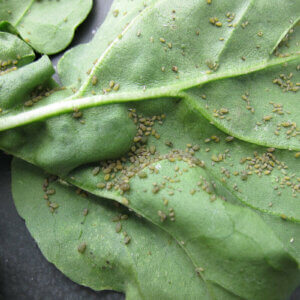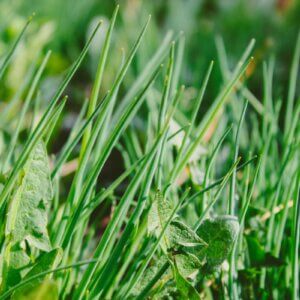Growing fresh herbs is a delightful task. Raising basil, dill, cilantro, oregano, mint, parsley, and other fragrant plants provide a fun distraction each day as you caretake your little greens. But the best part about growing herbs is that you get to enjoy a wide variety of flavor in your foods on a budget!
But what happens when your herbs become too abundant? Or if all the dill seeds you planted came up unexpectedly? Luckily, it’s easy to preserve your bumper crop of herbs with various methods for drying herbs.

Some herbs dry better than others: rosemary, sage, dill, coriander seeds (from cilantro), and mint do quite well. But parsley, basil, and cilantro lose a lot of their volatile oils and are less fragrant/flavorful when dried. They are all delicious, and below we’ll cover how to use a wide variety of dried herbs.
And as a bonus, dried herbs are super healthy! Even a pinch of herbs can boost the antioxidant content of a meal significantly, making them an easy and healthful addition to all your recipes.
3 Ways To Dry Herbs
There are multiple ways to dry your herbs at home. Here are the three best ways to dry herbs:
- Drying them naturally
- Drying them in the oven
- Drying them with a microwave
Drying Herbs Naturally
Natural drying means letting your herbs hang in a clean, dry location until they dry naturally. The best time to harvest herbs for drying is in the late morning after any dew has evaporated. Bunch the herbs together with twine or a rubber band, and hang upside down in a warm, dry room.
This would work much better in a drier climate (the southwestern U.S., lower Midwest); if your local climate is more humid (the Gulf and South Atlantic states, northern Midwest), be sure to check the herbs daily to ensure they are drying evenly.

Bonnie Grant at Gardening Know-How shares a great tip: When hanging your herbs, place a paper bag around the herbs (with holes punched in the sides to allow air flow) to catch any bits of herbs that fall off as they dry.
Drying Herbs In The Oven
Drying herbs in the oven is possible, although it takes a little care and time. WifeMamaFoodie explains how to do it with a few simple steps.
- Spread the herbs onto a baking sheet.
- Leave the door propped open to keep the heat from getting too intense.
- Bake for about an hour on the lowest setting possible
- Alternatively, if you want to be more energy-efficient, layer the herbs onto a baking sheet and leave them in the oven overnight with the light on. Most ovens have incandescent bulbs which give off heat (this is also my method for making homemade yogurt!)
Drying Herbs In The Microwave
Perhaps surprisingly, you can use the microwave to dry herbs! at Serious Eats extols the benefits of using the microwave, especially for more delicate herbs like basil. Unlike other drying methods, the microwave targets the water in the herbs and helps it evaporate, preserving both the flavor and color of these lovely greens. Here’s how you do it:
- Break your herbs off the stems.
- Layer carefully onto a clean dishtowel-covered plate.
- Cover with another dishtowel and microwave on full power for 40 seconds for delicate herbs and one minute for more sturdy herbs like oregano and rosemary.
- Check for dryness/doneness by crumbling herbs in your fingers – they should be totally dry.
Storing Dried Herbs
Just as important as drying your herbs properly, you need to be sure to store them properly. “The main culprits to the degradation of dried herbs are moisture, oxygen, sunlight, heat, and time,” explains Colleen Codekas at Herbal Academy.
https://www.instagram.com/p/BiObAfwA_p0/?tagged=driedherbs
She shares tips for ensuring that your herbs are kept well: First, ensure that your herbs are fully dry before packing, as any leftover moisture could contribute the degradation of your herbs. Protect your herbs from losing their potency by keeping them away from heat and sunlight.
How To Use Dried Herbs
If you’ve not yet used fresh herbs in your cooking, you are in for a treat: A few leaves of fresh basil chopped into salad is a revelation, fresh dill in potato salad is wildly fragrant and delicious, mint leaves bring brightness to homemade cocktails or mocktails, and fresh sage in browned butter atop pasta? I think you get my point: Fresh herbs are great to have in the kitchen.
Dried herbs can be used in many different ways in the kitchen, just like the herbs you’d buy at the store (but those have been likely sitting for months or years—good thing you dried your own!). Most dried herbs have a crumbly or papery texture, which means they are better suited for foods that contain a bit of liquid:
- marinade
- salad dressing
- pasta sauce
- soups and stews
- sauces
You can definitely use them atop salads or sprinkled atop veggies, but know that the texture might not be ideal. Below are some links to yummy recipes to make the most of your dried herbs.
Herb salts: This Emerald Salt recipe from Mountain Rose Herbs features healing nettles and flavorful rosemary, and this Tuscan Herb Salt includes potent garlic in the mix.
Herb marinades: One of my favorite recipes is this Zesty Marinade from my cookbook, which features Italian and Japanese-inspired flavors for a wild and wonderful mix. Use for veggies, tofu, potatoes, and more. This Honey Balsamic Vinaigrette features dried oregano for a rich flavor.

Salad toppings: This Vegan Ranch features dried chives, parsley AND dill, which looks like a magical combination. And this Fairy Dust sprinkle uses a good amount of Italian seasoning and so does this yummy Tofu Feta.You can make your own perfect blend of Italian seasoning with basil, oregano, marjoram, thyme, and rosemary.

In salads: This Vegan Potato Salad and Chickpea “Tuna” Salad both use dried dill for a bright flavor and would be great for upcoming summer picnics.
For pasta sauce: Mel makes a lovely Homemade Marinara with a good dose of dried rosemary!
And don’t forget soups: Dried basil and oregano make a statement here in this Minestrone Soup.

Other Preservation Methods For Fresh Herbs
If you decide that you want to use your herbs in other ways than just drying them, there are a few other preservation methods that would work.
Freezing Herbs
It’s also possible to freeze herbs in a few different ways. Rodale’s suggests laying the herbs onto a baking sheet in a single layer, then freezing. Once solid, these can be put into a reusable container and kept frozen until use. Jean Nick says these will last for months before becoming tired looking.
The other option is to wash and chop herbs, and then freeze them with a bit of water in ice trays. Nick has a brilliant suggestion of adding a bit more water the second day to ensure the herbs are fully covered. These cubes can then be used in soups, stews, marinades, or anything else that is watery.
Making Herbal Butters (Compound Butters)
This is an easy way to get fresh herbal flavor all season long. Chop up herbs and add to softened butter or vegan butter, using a ratio of one part herbs to two parts butter/vegan butter. Freeze the butter in pats or in ice cubes so that it remains packed with fresh flavor.

Make Infused Vinegar With Herbs
Flavorful vinegar for salads, marinades, and drinks can be made easily from fresh herbs and vinegars, and they make beautiful custom gifts, too. Mother Earth News has an excellent article that explores the range of flavor combinations for herbal (and fruit) vinegars.
The basic recipe is 4 cups fresh herbs to a gallon of vinegar, or if you’re making less, 1 cup fresh herbs to 4 cups vinegar. Don’t use distilled white vinegar (save that for cleaning)—instead choose apple cider vinegar, white wine vinegar, or rice vinegar. Do keep in mind, though, that rice vinegar is not usually above 5% acidity, which is important for preservation, so keep these in the fridge. Infuse your vinegar for three to four weeks, then strain off any solids and store in a clean, sterilized jar. Refrigerate and use within three months for best flavor.
Infuse Your Alcohol With Herbs
Making infused liquors is a tasty, easy way to use up your herbs and make delicious, homemade cocktails. In their review of Infuse, the authors at Behind the Bar explain that a good ratio for fresh herbs to liquor is 1:2, although you might want to experiment with a bit less or more, depending on how potent the herb.

Wash your herbs and then add to a large Mason jar. Muddle the herbs slightly to release some of the oils, then cover with your spirit of choice. Vodka, gin, or whiskey are great options for base spirits. Shake the jar well, then store in a cool, dark place, but not so dark that you’ll forget about it! Shake everyday to ensure herbs are distributed evenly. Taste every few days to see how strong the infusion is and give it a few more days if it needs to be stronger. Once it’s flavored to your liking, strain off solids and pour into a clean jar.










































Leave a Reply